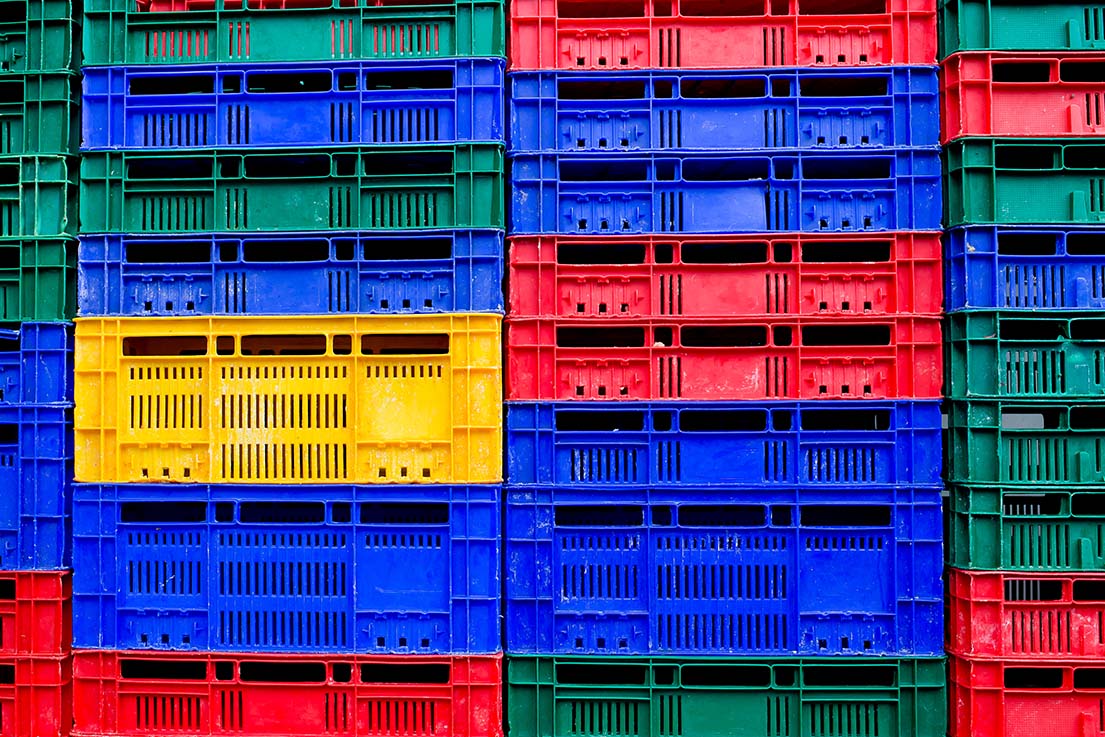

Improve Sustainability by Stopping Waste in 3 Key Places
By Grainger Editorial Staff 4/26/22


When you're trying to improve the sustainability of your operations, recycling programs can look like an easy win. Just install a second set of waste bins and contract a cartage vendor to haul the contents to a recycling facility.
But in waste management, as in so many other parts of life, the easiest solutions aren't necessarily the best. Recycling programs are worthwhile, but according to the EPA, the most environmentally preferred waste management strategy is source reduction.
The name may be unfamiliar, but the principle is simple. It's the idea that the most effective way to reduce your facility’s waste is to keep future waste from ever coming in the loading dock door. That's why it's sometimes called "waste prevention." If you try to use fewer disposable items to begin with, it's that much easier to make sure you're throwing away less at the end of the day.
To get started on source reduction, consider these areas where you might eliminate or reduce sources of waste in your facility.
Trash Bin Liners
The bin liners that hold your trash inevitably become part of your facility’s landfill waste. Choosing the right trash bags—not any bigger or thicker than they need to be—can make a surprisingly large difference in your total trash volume over time.
It's simple—just make sure your liners are exactly sized to your trash bins, and use the thinnest gauge that has a weight limit appropriate to your needs. For example, by switching from 10-gauge, 30 x 37 liners to 8-gauge, 24 x 33 liners in the same trash cans, a business that goes through 50 cases of 1,000 bags each per month would reduce its waste stream by 7,728 pounds of plastic per year, according to data provided by an industry leader in trash bag manufacturing. See some specific size recommendations here.
Packaging
When you work in operations, using disposable containers and packaging can seem inevitable. Cardboard boxes and pallets allow you to move and store your products and inventory, which are made up of items that more often than not also have their own packaging. Some disposable packaging is unavoidable, but you may be able to seriously reduce your business's exposure.
To start small, keep an eye out for products that come in minimal packaging or in reusable containers when making purchasing decisions. Consumer packaged goods manufacturers are increasingly selling products in refillable containers, for example, and it has long been clear that minimal packaging is a way that manufacturers can support their sustainability initiatives while also lowering their costs.
To think big, consider ditching wooden pallets and cardboard boxes in favor of reusable transport solutions like plastic pallets and transport containers. StopWaste, a public agency focused on reducing waste in one California county, has published case studies describing how investments in reusable solutions can see returns in as little as four months.
Cafeteria and Break Room Supplies
Plastic utensils, plastic foam trays, paper napkins and drinking straws can become a major source of waterway pollution. In a study cited by the EPA, up to two-thirds of litter in the San Francisco Bay Area’s storm drains and waterways came from disposable food service items.
Businesses can do more to address this problem. Consider providing alternatives to disposable plastic products in the workplace. Encouraging workers to bring reusable cups and mugs to work and providing a place to store them in the break room is a good place to start. Installing a dishwashing station and durable flatware in the break room can reduce the need for disposable plastic utensils. A water cooler with a bottle filling station can encourage the use of water bottles.
Don't just make these changes in silence. Explaining the sustainability goals to employees and communicating the progress that the organization is making can help create a shared sense of purpose and motivate people to do that little bit extra to pitch in.
The information contained in this article is intended for general information purposes only and is based on information available as of the initial date of publication. No representation is made that the information or references are complete or remain current. This article is not a substitute for review of current applicable government regulations, industry standards, or other standards specific to your business and/or activities and should not be construed as legal advice or opinion. Readers with specific questions should refer to the applicable standards or consult with an attorney.






